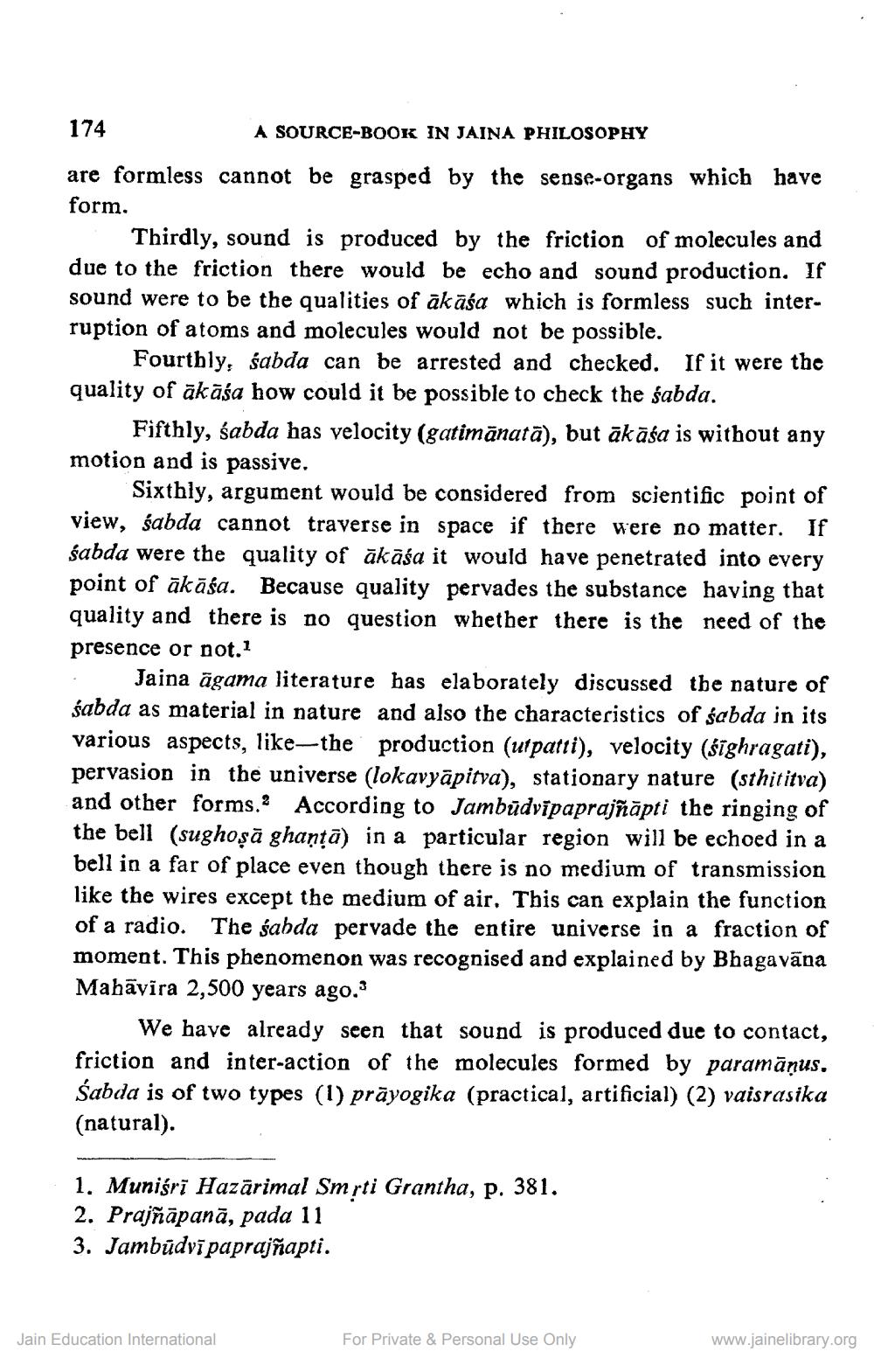________________
174
A SOURCE-BOOK IN JAINA PHILOSOPHY
are formless cannot be grasped by the sense-organs which have form.
Thirdly, sound is produced by the friction of molecules and due to the friction there would be echo and sound production. If sound were to be the qualities of ākāśa which is formless such interruption of atoms and molecules would not be possible.
Fourthly, sabda can be arrested and checked. If it were the quality of ākāśa how could it be possible to check the sabda.
Fifthly, sabda has velocity (gatimānatā), but ākāśa is without any motion and is passive.
Sixthly, argument would be considered from scientific point of view, sabda cannot traverse in space if there were no matter. If sabda were the quality of ākāśa it would have penetrated into every point of ākāśa. Because quality pervades the substance having that quality and there is no question whether there is the need of the presence or not.1
Jaina agama literature has elaborately discussed the nature of sabda as material in nature and also the characteristics of sabda in its various aspects, like the production (utpatti), velocity (śighragati), pervasion in the universe (lokavyāpitva), stationary nature (sthititva) and other forms.2 According to Jambudvipaprajñāpti the ringing of the bell (sughoṣā ghaṇṭā) in a particular region will be echoed in a bell in a far of place even though there is no medium of transmission like the wires except the medium of air. This can explain the function of a radio. The sabda pervade the entire universe in a fraction of moment. This phenomenon was recognised and explained by Bhagavana Mahavira 2,500 years ago.3
-
We have already seen that sound is produced due to contact, friction and inter-action of the molecules formed by paramāņus. Sabda is of two types (1) prayogika (practical, artificial) (2) vaisrasika (natural).
1. Muniśrī Hazārimal Smṛti Grantha, p. 381.
2. Prajñāpanā, pada 11
3. Jambudvipaprajñapti.
Jain Education International
For Private & Personal Use Only
www.jainelibrary.org




